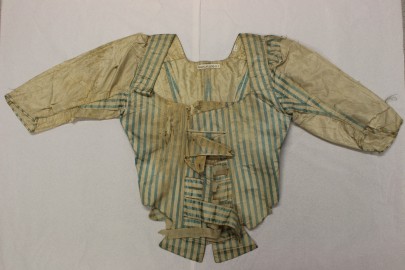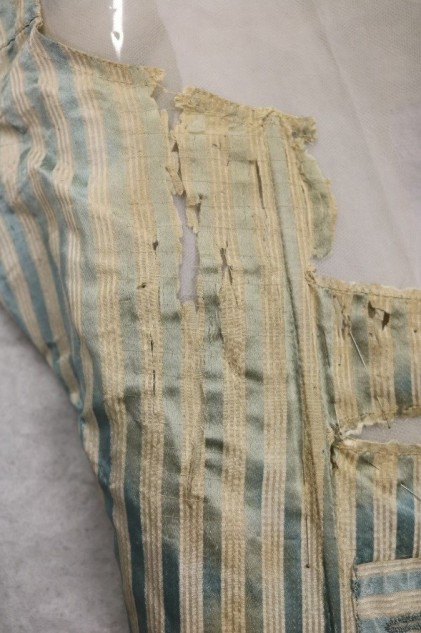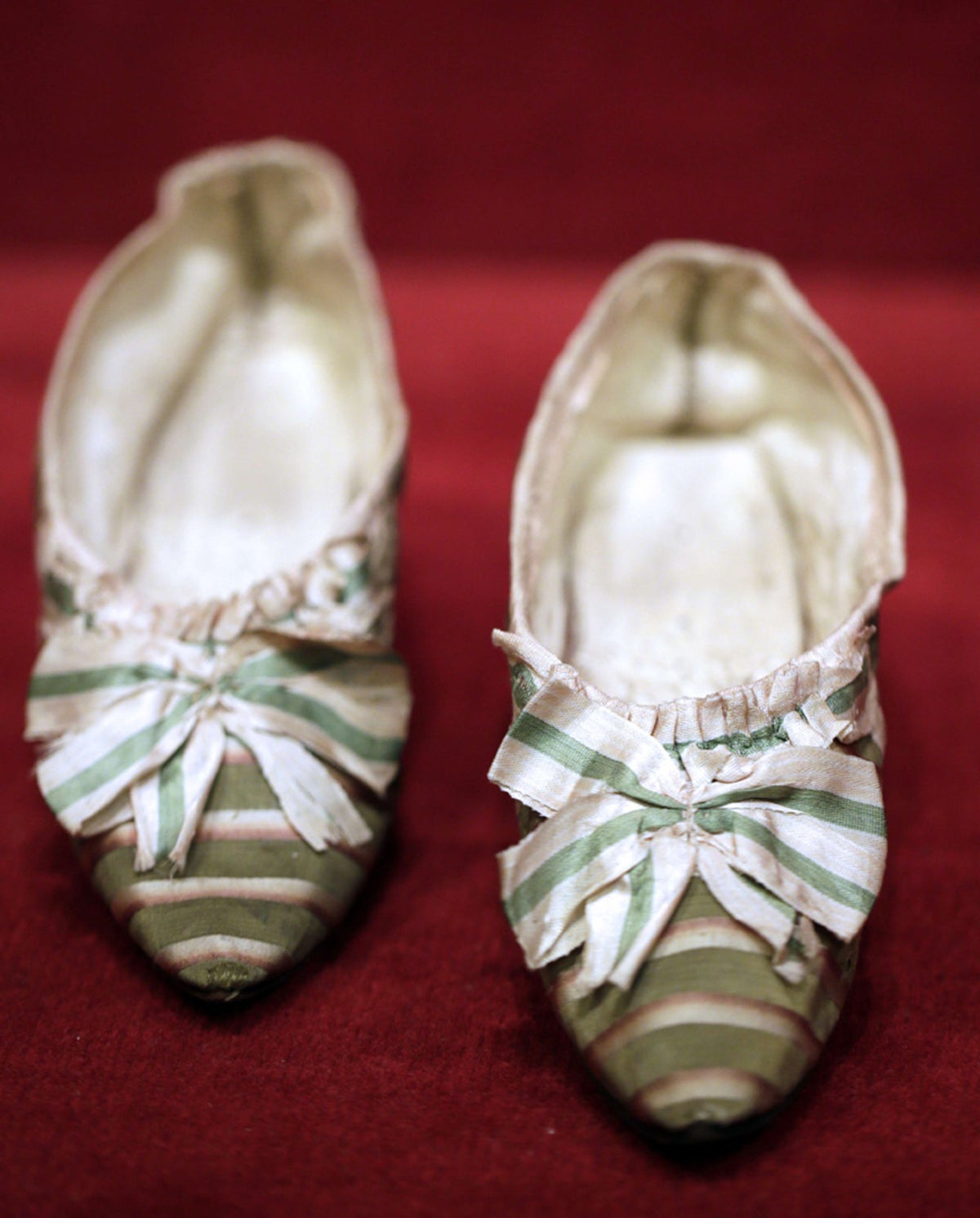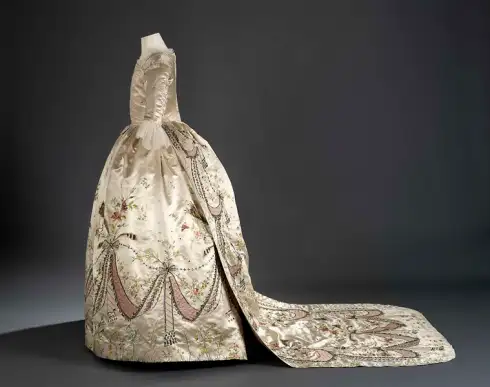The famed wardrobe of the Queen of Fashion has drawn immense attention, both in Marie Antoinette's own lifetime and after her brutal death. Traditionally, the queen of France - or in lieu of her, the king's mistress - set the tone for fashion at court. Since France was the fashion capital of the world, the French queen's wardrobe was the go-to for foreign courts' new fashions.
The queen's wardrobe was not necessarily a personal matter; in fact, one of the criticisms faced by Marie Antoinette was not primarily the amount of spending (that came later) but the fact that her fashions were so personal. She was meant to represent the best of French fashion - inventing those fashions were better left to others. It did not take long before the queen's wardrobe became a matter of intense dispute in both capital and countryside. Marie Antoinette found herself in a paradox; when she spent lavishly on her wardrobe, she was decried as a mindless spendthrift but when she pioneered her much simpler chemise à la Reine, those same critics were horrified at the very simplicity of her clothing. It would seem that either way, she was reviled for her fashion choices.
During the revolution, the queen's wardrobe was utterly destroyed. Some perished in the initial assault on Versailles in October 1789; from the moment the royal family left, it became quite easy to steal lighter items. Thus, the late queen's wardrobe is almost entirely gone today. Only a few pieces remain to give an insight into the fashions Marie Antoinette wore at the end of the 1780's - the fashions she sported before that were long gone when the revolution broke out.
The Nelson and Norfolk exhibition included a bodice said to have been worn by Marie Antoinette. Made in silk of striped white/turquoise, the bodice was clearly meant to be worn over a tightly-laced corset. When the exhibition received the garment for preparation, it was in remarkably poor condition. The sleeves had been cut up as pieces had been taken for mementos over the years; besides the garment was absolutely filthy. After several careful washes, the dull blueish colour turned out to have been originally a bright turquoise.

The curators carefully washed and dried the garment; notice the flaps overlapping each side of the bodice. Earlier in the 18th century, such decoration would have been in the shape of ruffles, bows or even jewels but the tastes of the 1780's were for something far simpler. Stripes, too, were very fashionable. The bodice is lined with a white silk taffeta.

The difference after cleaning is quite clear - but so is the incredibly fragile condition of the fabric. It has clearly torn in some places, despite the careful handling.
This ruffled ribbon was worn by Marie Antoinette in either 1784 or 1786. Given the colour, it could very well be a mourning item; her youngest daughter, Sophie, died in 1786 which makes a likely candidate for the clothing's origin. Such a ribbon would typically be worn under a hat or a bonnet

It looks remarkably much like the one, the young dauphine is seen wearing in this miniature portrait. However, the miniature shows Marie Antoinette in mourning for Louis XV which predates the black ribbon above by a decade.

These slippers were worn by Marie Antoinette herself and are made of striped white and green silk; if you look carefully at the body of the shoe, the green stripes are delicately joined by a pale pink. They were sold at auction by the French auction house Drouot. The shoes were supposedly given to her in 1775 by Alexandre-Bernard Ju-des-Rets. They are now the private property of an unknown bidder.

Another shoe which belonged to the late queen was this white silk slipper, also sold on auction. Despite a few tears and stains, the show is in remarkably good condition with two rows of ruffles and a heel of 4,7 cm. It measures 22 cm in length and - besides the silk - is made of goatskin with a leather sole. For once, we know how the shoe survived the turmoils of the royal family's captivity. It was given to the Marie Émilie de la Chapelle who happened to be a good friend of Madame Campan - Marie Antoinette's close confidant. Her husband was also in the king's household but was sadly guillotined in 1794.
/cloudfront-eu-central-1.images.arcpublishing.com/madsack/2E3IX4WNWVEELKJJZE44TZMACU.png)
By far the most famous surviving piece from Marie Antoinette's wardrobe is this gown by the infamous Rose Bertin. The silk concoction - complete with a regal train - is richly adorned with hand embroidered "garlands" of pink as well as exotic peacock feathers, delicate spring flowers and bouquets. Added to that were the luxurious touches of spangles and glass stones on a background of magnificent white silk.

It should be said that the dress is merely alleged to have been worn by Marie Antoinette - as is most pieces on this list. This particular dress was altered by the Ontario Museum in the 1870's which means that it no longer has the same appearance as it would have had.

Corsets were a stable of any woman's wardrobe - the ladies of the court wore tight-laced whalebone corsets with their grand habits de cour. Upon her arrival at court, the then-15 year old Marie Antoinette caused a stir when she refused to indulge in the tradition. Although people agreed that she was so slight of frame that she did not need the rigid constriction of the corset, it was still seen as a matter of status to wear fine corsets.
Perhaps this corset is a result of the queen's dislike for whalebone corsets. This one is made from delicate taffeta but not boned; instead, a piece of curved wood would be inserted at the front, creating the same stiff bodice. It is hard to see from the photo, but the corset is actually slightly blue - it is currently owned by the city of Paris

Note the detailing of the sleeves - the fabric appear to have been pleated over the arms. The details alone indicate that immense attention was paid to an item of clothing which - at first glance - looks remarkably simple. Even with the obvious stain on the front of the bodice, the corset is in remarkably good condition.

A lace fichu worn by Marie Antoinette; the type of lace is the so-called Beauvais and was made by hand. It came into the possession of Alexandre Chappet de Vangel who served as an officer in the bodyguards attached to the protection of the dauphin and dauphine. From there, it was passed through his family before finally being sold at auction recently.


I am reading her biography: I feel so much pity for her.
ReplyDelete